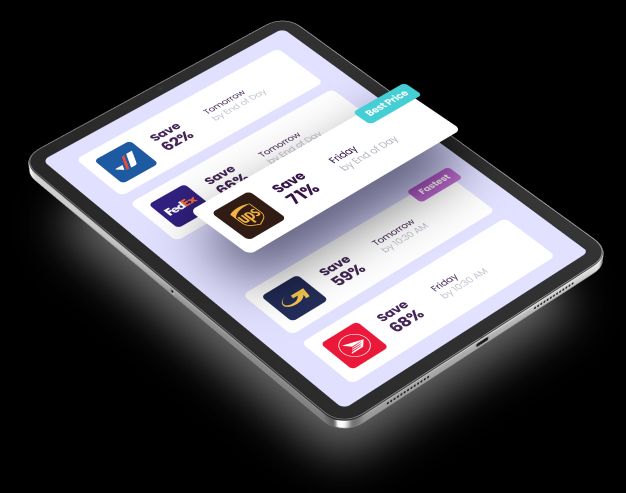
Oct 27, 2025 • by Paul Bourque
Can I ship to France with FedEx?
FedEx's collection of airplanes and worldwide connections ensures regular package deliveries from Canada to France


by Dan Allard
Aug 7, 2017
Key Points
Table of Contents

For most online retailers, order fulfillment and shipping is one of the most important business operations. It’s been said that if you master shipping you’ll master ecommerce. Understanding how to ship and fulfill orders efficiently can make the difference between succeeding in business and failing.
Although it is one of the most important operations for ecommerce businesses, most business owners don’t get excited about shipping and fulfillment. They’d rather talk about new marketing strategies and growing sales, and who could blame them. Marketing ROI can be easier to measure than an ROI from an efficient shipping strategy.
But the real benefits don’t just appear on the bottom line at the end of the year. Many online retailers have turned the process of shipping and fulfillment into a competitive advantage. Here are seven ecommerce shipping tips for online sellers:
The world of ecommerce is constantly evolving and consumers are demanding more from online retailers. A great product shipped in a timely manner isn’t quite enough anymore- consumers want the packaging to be a part of the shopping experience.
Companies need to go above and beyond what they’ve done in the past to impress customers. Successful online retailers are shifting their mindset from providing a great product, to providing a great product and customer experience.
This doesn’t mean your boxes have to have confetti bursting out when you open them. Simplicity and consistency are what’s most important here. Your packaging should have your logo, tagline, and web address printed where it will be noticed. On top of that, the box should be packaged in a way that will make the customer enjoy the unboxing experience.
Packaging isn’t the only thing becoming more complicated- the way online retailers charge for shipping is changing as well. Today more ecommerce businesses are offering free shipping than ever to their customers, but that doesn’t mean every item they sell qualifies for free shipping.
Instead many online businesses are implementing multi-tier shipping costs. Think of the large online retailers- many of them offer free shipping but that doesn’t mean you can go to their store, purchase a $5 item, and expect free shipping. You have to meet a minimum purchase amount to qualify for free shipping. This not only protects your profit margins on small purchases but also entices customers to spend more money.
Many of the ecommerce platforms available today make it easy to set your shipping rates. In many cases you can even set up weight-based shipping rates, calculated shipping rates based on the buyer’s location, tiered shipping rates, and more.
Most of the top ecommerce platforms have 3rd party plugins available to extend their features. There are plugins to print shipping labels, email tracking notifications to your customers, manage returns, and much more. You are now able to automate much of the shipping and fulfillment processes.
If you have a store built with Shopify and are located in Canada we recommend using our Secureship Plugin. With our free plugin you’re able to:
The process of creating shipping labels is easier than ever and can be done automatically by the plugin or ecommerce platform you’re using. If you really want to ship like the pros, consider purchasing a thermal printer.
Unlike ink and toner based printers, thermal printers do not have ink or toner cartridges that have to be replaced. Because of this you can save a lot of money, especially if you were printing your labels with a household inkjet printer.
If you’re shipping a package outside of your country you’ll need to include customs documentation. These forms are available at your local post office or online. They are used to identify what is in the package, what the value is, and whether it is a gift or purchase among other things.
In order to avoid customs delays, you’ll want to fill out the documentation as accurately as you can. Also, check the rules of the country the package will be sent to. Certain items are banned in some countries, and there are many rules and regulations that may apply to your shipment. Do some online research to make sure you’re compliant.
Many beginners in the ecommerce world start out by storing their inventory in their closets, attics, or garages and there’s usually not much organization. Does this sound like you? That system, or lack thereof, may work when business is just starting out, but once it takes off you’ll quickly find that you need better organization for your inventory.
Think about how well Amazon’s warehouses are designed and organized. Their massive warehouses save them money and time and a proper system can do the same for your business. You don’t need to purchase a warehouse if you’re not at that stage in business- many small online retailers have well-organized inventory layouts in their garages or other rooms. The room does not make a difference, it’s how you organize the inventory.
When starting out as a new online seller it’s easy to make things work without a system in place. Have you ever brought a package to the post office, only to return home and see you received a new order? So you package the new item up and head for the post office again. It’s something many of us do when starting out.
Once you start getting enough orders in you’ll realize your time is your most important asset. You won’t have time to print a shipping label each time an order comes in, run to the post office each time, and package items individually throughout the day. Instead, you’ll want to set aside designated times for each process.
Each day you’ll want to pull all of the orders for the day at the same time, package them at the same time, print the shipping labels at the same time, and run them to the carrier or arrange for pickup at the same time. This way you will develop a routine that will save you time and make your business operations more efficient.
Want to save time and money on shipping? With our service, Secureship, you can compare shipping quotes from multiple carriers at once, select the best one, print the shipping label, track the items, and much more all within one single place. Get a free shipping quote today and see how much you can save!

Oct 27, 2025 • by Paul Bourque
Can I ship to France with FedEx?
FedEx's collection of airplanes and worldwide connections ensures regular package deliveries from Canada to France

Oct 23, 2025 • by Paul Bourque
How much does it cost to ship from Canada to Spain?
Today, shipping from Canada to Spain is expensive; but it is dramatically cheaper with Secureship as your broker

Oct 20, 2025 • by Paul Bourque
Which is the cheapest courier from Canada to Germany?
The easiest way to find the cheapest courier to Germany is to use Secureship as your shipping broker